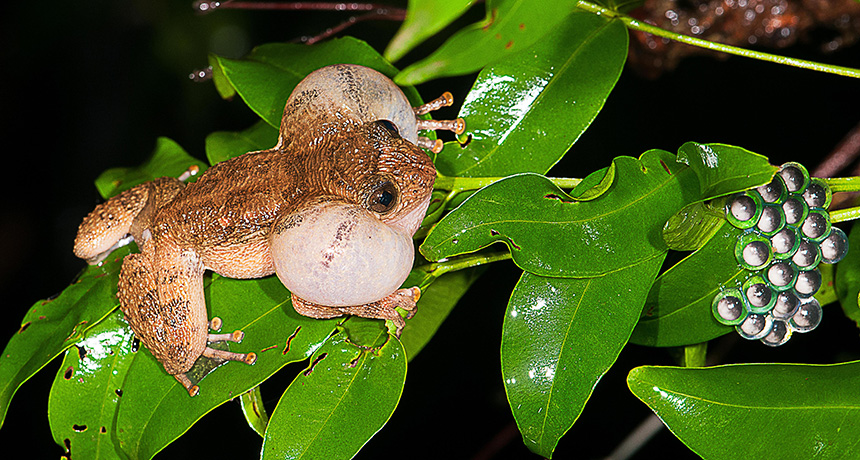‘Kermit Sutra’ gets seventh amphibian mating position
Male Bombay night frogs rely on unusual, indirect sperm transfer

HEY, SUGAR A male Bombay night frog, puffed up with a croak after mating, hovers near eggs, although he fertilized them by an indirect no-touch approach.
S.D. Biju